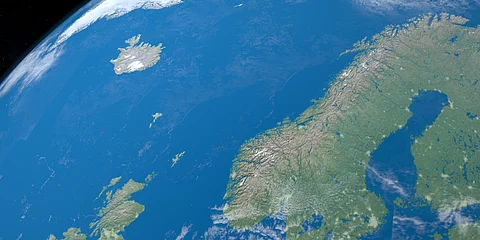

The tiny copepod Calanus finmarchicus is a key food source for most fish species in the seas around Norway, particularly important for cod and pelagic fish.
Estimated at an astonishing biomass of 33 million tonnes, it also an abundant source of potential protein for use in aquaculture feed and other products – described as "an ultra-efficient food source for fish and shrimp" by Calanus nutrition specialist Zooca.
While Calanus is abundant in the seas around Norway, copepods have not historically been targeted by the Norwegian fishing industry. Given this enormous resource on its doorstep, the Norwegian government has sought to boost interest in fishing for copepods by opening the fishery to commercial licences.
Since 2020, the Norwegian authorities have set the catch quota for the copepod zooplankton at 254,000 tonnes, a tiny fraction of the estimated total Calanus finmarchicus biomass in the Norwegian Sea.
But despite government encouragement, limited interest has been shown in the fishery. In 2020, not a single catch was landed, while during both 2021 and 2022, a little more than 1000 tonnes were landed in Norway, accounting for less than 0.4% of the allowed quota per year.
And, although many fishing vessels were granted fishing permits, only three of them landed copepods over this two year period.
Why the apparent lack of interest? According to a recent report by Nofima, perhaps unsurprisingly, profit is the primary consideration.
"Fishing boat owners may find themselves in a position where they have to choose which species they want to prioritise. For the individual fishing vessels, the decision to participate in the Calanus finmarchicus fishery or other fisheries will depend on the relative profitability between Calanus finmarchicus and other available fisheries. They then choose the one that is most profitable", says Nofima scientist Egil Hogrenning.
Hogrenning noted that participating in the Calanus fishery may be best suited to vessels targeting the mackerel and spring-spawning Norwegian herring fisheries, but that those focusing on species such as coley, haddock, and to some extent cod would need to make adjustments in order to also fish for copepods.
"These vessels will probably have to consider to a greater extent whether it is possible for them to combine Calanus finmarchicus fishery with the other species they are fishing for, without this having a negative impact on profitability", Hogrenning said.
Nofima's report was produced for the SFI Harvest research project. The project, funded by the Research Council of Norway, focuses on responsible harvesting and processing of underutilised species at lower trophic levels.
